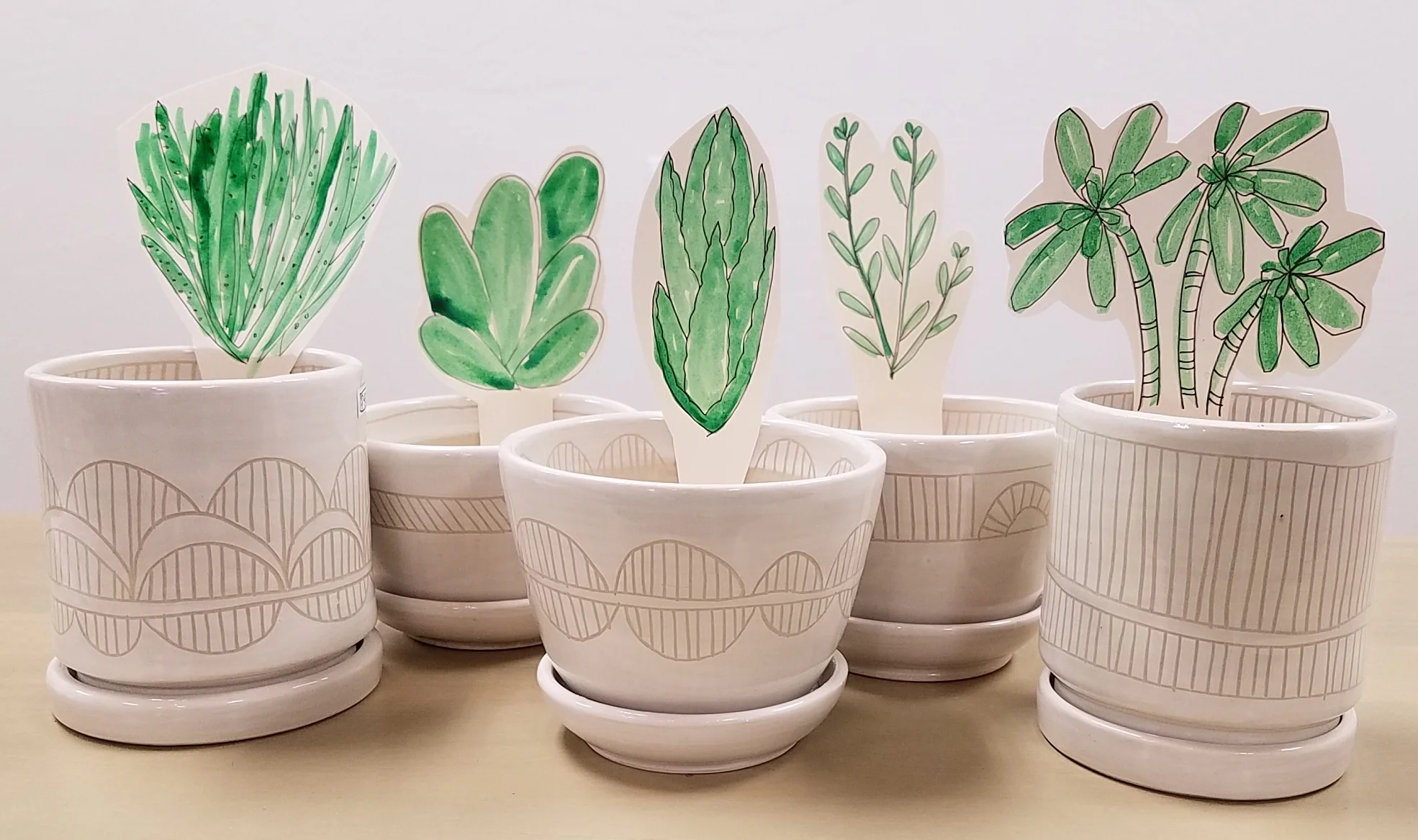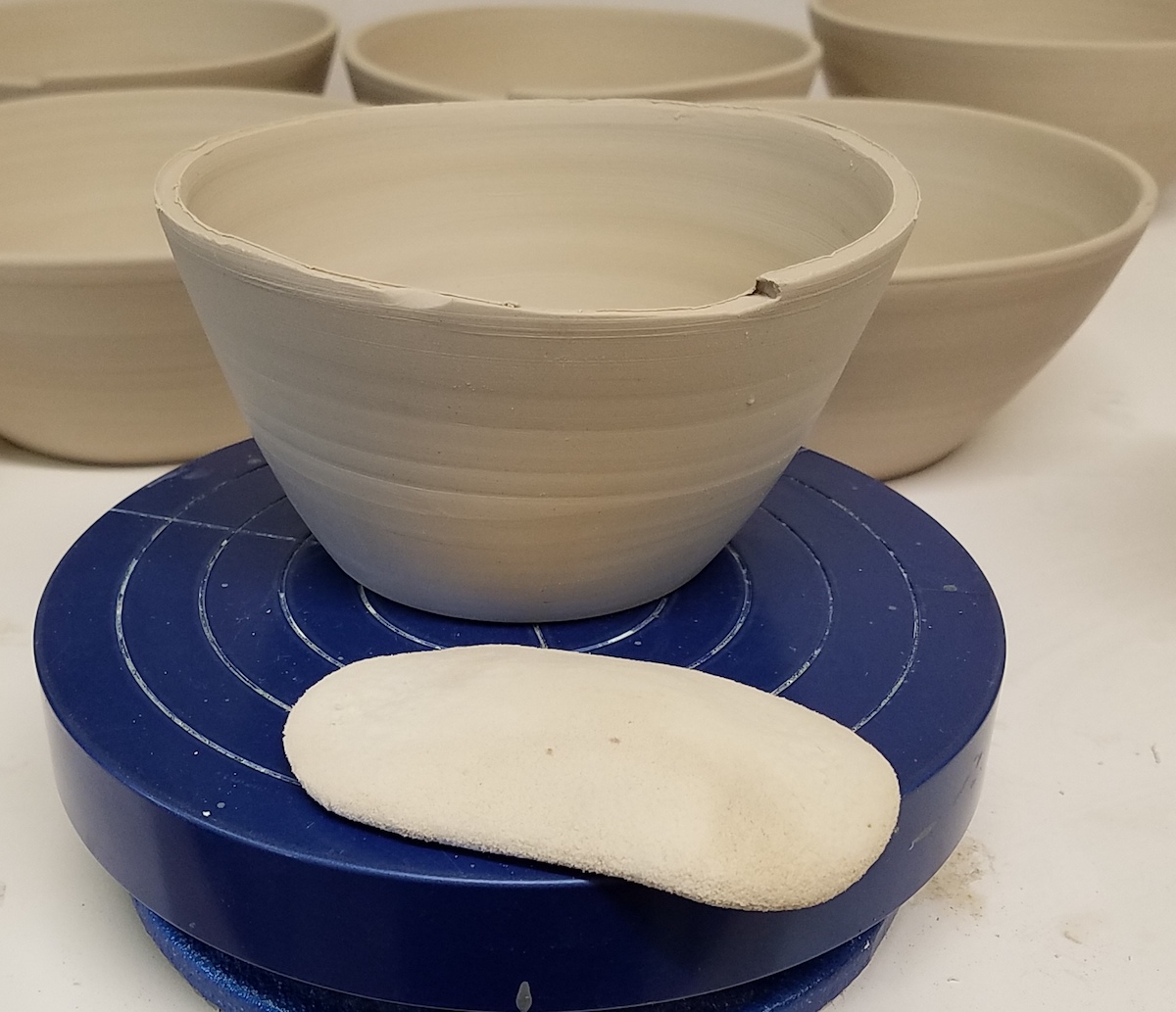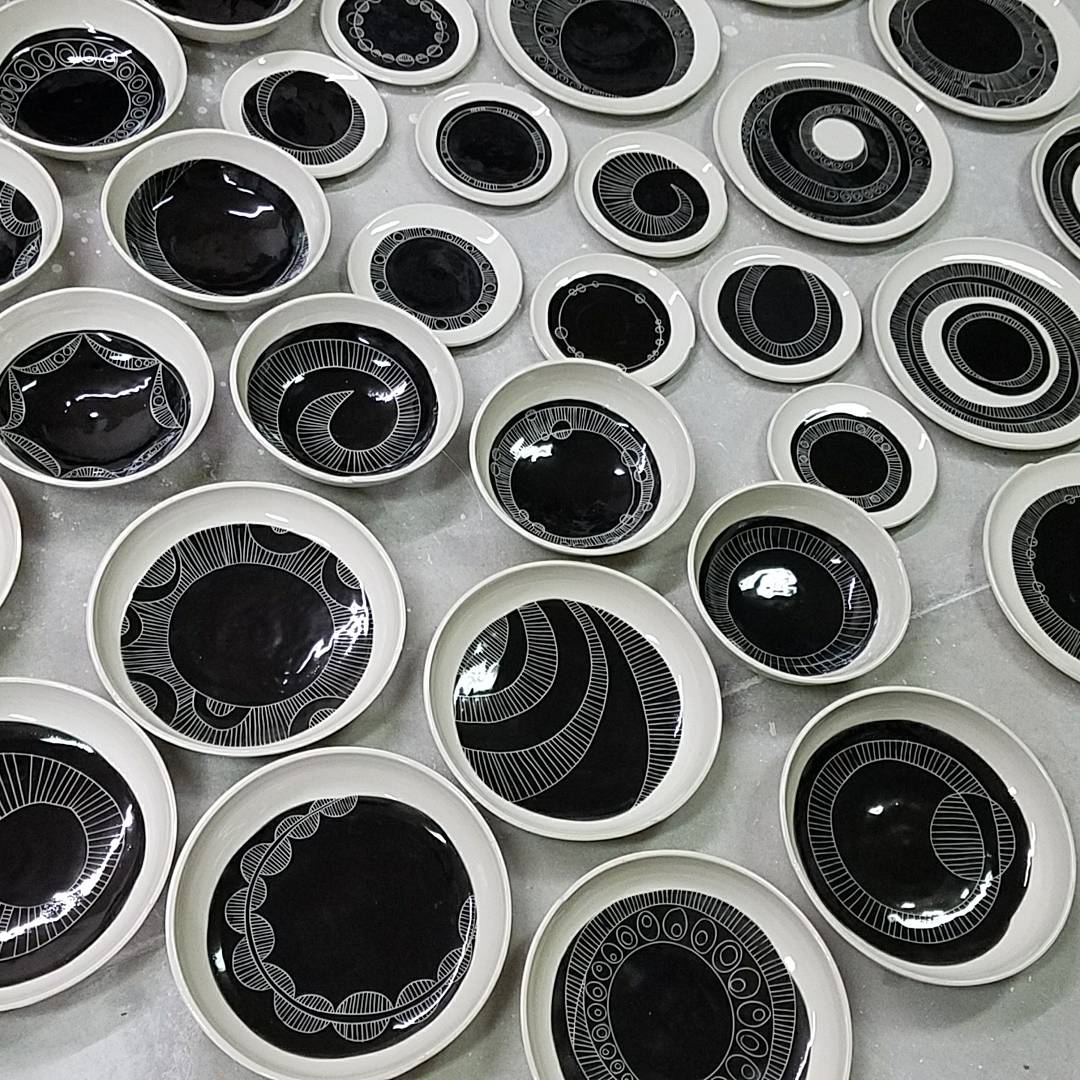Details
Jenny Dowd
I spend a lot of time on details.
When I started this series of black & white sgraffito ware, I found my tight forms with their even rims to be in conflict with my hand-drawn designs. Expression and imperfection are inherent to hand-drawn lines, I felt that this needed to be reflected in the pottery- even if I had to force it.
I use a wire to cut the rim of bowls and plates before removing them from the wheel. Once the piece is dry enough to handle yet still malleable I spend a lot of time smoothing the rims (and the whole piece) with my favorite finishing sponge.
The cut rims are very similar, yet when the dishes are stacked the slightly undulating lines are more apparent.
As much as I like these cuts rims, I know it is risky. These piece are more susceptible to cracking and chipping. It's a risk I'm willing to take in order to gain the harmony found between an uneven rim and the hand-drawn images and patterns.
Cups, mugs, pitchers, and vases are treated similarly- I allow the rim to be uneven as I am throwing the form on the wheel. Sometimes the rims are even, sometimes not, and the result is always very subtle.





































